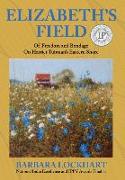- Start
- Elizabeth's Field
Elizabeth's Field
Angebote / Angebote:
Winner, Silver Medal, IPPY AWARDS (Regional Fiction) Elizabeth's Field captures the realities of pre-Civil War life on Maryland's Eastern Shore and creates characters that struggle in extraordinary adversity. Lockhart traces the branches of several generations of black families, their histories merging, the memories of their grandparents' miseries fading yet not forgotten. Her carefully limned descriptions of the land - the profusion of flora and the turning of the seasons - are masterful. Through fully rounded characters and lyrical prose, Lockhart's novel teaches some hard lessons about man's inhumanity to man. Kathryn Lang, former editor at Southern Methodist University Press The characters in Elizabeth's Field are clearly defined and the environment carefully re-created so that we feel we are indeed stepping into the past, actually viewing people behind the gauze curtains of long ago. Weaving the present with the past, Lockhart brings us face-to-face with how slavery has continued to impact people on the Shore. Elizabeth's Field is a thoroughly readable work, thought-provoking and well-written. G. Ray Thompson, PhD, professor of history emeritus and former director, The Nabb Center, Salisbury University Elizabeth's Field is the story of the free black population living on Maryland's Eastern Shore in a county known for being the birthplace of Harriet Tubman. Elizabeth, a free woman of Indian and African-American descent, owns land in 1852 and loses it in 1857. Her struggle to hold onto the land and her connection with Sam Green, the local minister who is sentenced to ten years imprisonment for having a copy of Uncle Tom's Cabin, attest to the turmoil existing within Maryland's borders. Mattie, the present-day farm worker on whose oral history the novel is based, searches for answers to her genealogical history. As she tells the story of her life, she reveals the societal and agricultural changes that occurred on the same land that was Elizabeth's field one hundred and fifty years before.
Folgt in ca. 15 Arbeitstagen


